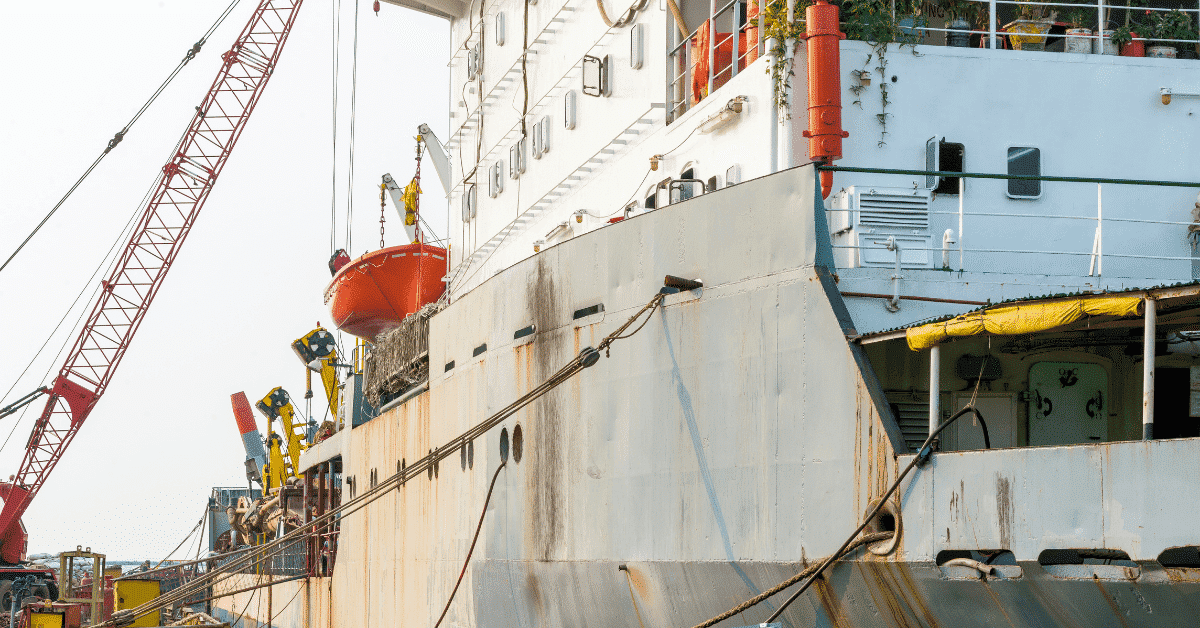The inert gas system is an essential part of cargo operations on tanker ships and must be handled with extreme caution due to the hazardous effects of inert gas on humans.
To ensure their safety onboard ships, officers in charge of the Inert Gas System must take certain precautions.
1. Ensure That Inert Gas System Safety Devices Are Properly Maintained
Safety devices on IG systems are used to prevent cargo gas backflow into machinery spaces. For added safety, a water seal and a vent should be installed on the deck main in addition to the non-return valve.
An additional water seal is sometimes installed at the bottom of the scrubber. It is critical that these devices are kept in good working order at all times.
2. Maintain an Adequate Oxygen Level
A lack of oxygen is extremely dangerous to the human body. It can easily cause death as well as brain damage.
In the event of an oxygen deficiency, the mind is likely to become apathetic and complacent, and attempting to escape at this point will aggravate the mind and body’s weakness.
As a result, the cargo tanks must be thoroughly ventilated to ensure that no pockets of oxygen deficiency remain and that a constant reading of 21 percent is obtained at all times.
3. Check for Combustible Gases
It is important to note that inert gas has no effect on the toxicity of hydrocarbon gases, which can be extremely dangerous (as it is flammable).
Tank gas freeing must be done correctly to eliminate potential gas pockets. With a reliable combustible gas indicator, each compartment must show a reading of zero or one percent of the lower flammable limit (LFL).
4. Remove Toxic Flue Gas Components
To determine the presence of flue gases in the tank, use an approved combustible gas indicator. Flue gases contain sulphur dioxide, carbon monoxide, and nitrogen, which must be accurately measured during the gas freeing process.
After ventilation, the tank’s flue gas reading should be 1% or less than the LFL, with an oxygen reading of 21%. Before entering, continue to ventilate until a steady reading of 21 percent oxygen is obtained.
5. Check the Tank Pressure
Check the tanker pressure before opening any tank lids, ullage plugs, or tank washing openings. Before opening any tank, the pressure in the inerted cargo tank must be reduced sufficiently.
6. Keep Air Out Of The System
If an inert gas system fails to deliver the required quality and quantity of inert gas, or fails to maintain positive pressure in cargo tanks, action must be taken immediately to prevent air from being drawn into the tanks.
All cargo and ballast discharge from inerted tanks must be halted, the inert gas deck isolating valve closed, the vent valve between it and the gas pressure regulating valve (if provided) opened, and other immediate repairs to the inert gas system must be made.
7. Take Precautions to Avoid Electrostatic Ignition
Hydrocarbons in the tanks can be hazardous. If the tank atmosphere contains flue gas containing small particulate matter with a small electrostatic charge, an electrostatic ignition is possible when the oxygen content of the tank rises due to air ingress. Thus, prevent any air from entering the tanks.
8. Don’t Start Repair Work Unless Gas Is Released
Since inert gas is asphyxiating, even if the leakage occurs in the open air, a person can quickly become unconscious.
As a result, extra caution is required when performing any maintenance/repair work on the IG plant.
It is recommended that the I.G plant be completely gas-free before beginning any work. Internal inspection of any unit in the Inert Gas System should take place only after standard procedures for entering enclosed spaces have been followed.
9. Be Cautious Of Hydrogen Sulphide
When the oxygen content of the I.G. is reduced during operation, In the system, pyrophoric deposits form in tankers, particularly those transporting sour crude oil.
Together with crude, these deposits produce hydrogen sulphide, which is highly toxic in nature. If pyrophors and hydrogen sulphide are not properly removed, they can persist even during subsequent ballast passages.
10. Ensure The Blowers Are Working Properly
Blowers are commonly used on oil tankers for gas freeing, so an air inlet (suction from the atmosphere) at the suction side of the blower with a blanking arrangement must be provided.
Blanking arrangement must be secured during normal operation. It is to be opened during gas freeing and air supplied to the tanks by the blower.

